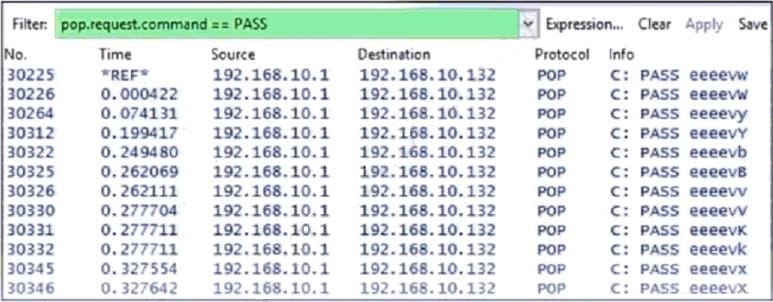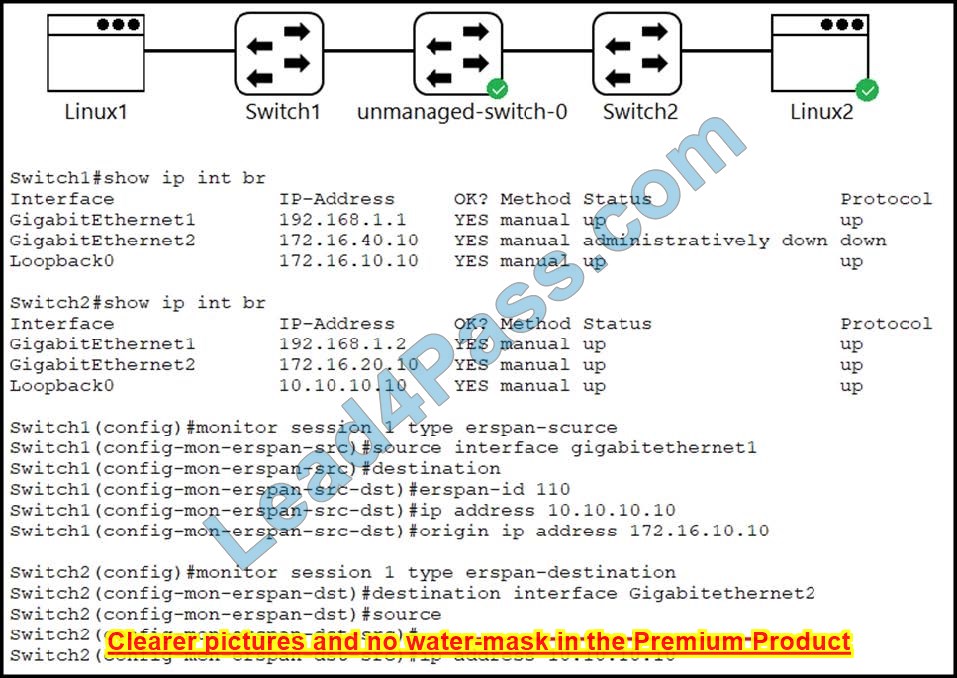The latest Cisco 300-115 dumps exam practice questions and answers update online free try, the best https://www.leads4pass.com/300-115.html dumps exam training materials and study guides demo online, 100% success and guarantee to pass Cisco 300-115 exam test quickly and easily at the first time.
QUESTION 1
After UDLD is implemented, a Network Administrator noticed that one port stops receiving UDLD packets. This port continues to reestablish until after eight failed retries. The port then transitions into the errdisable state. Which option describes what causes the port to go into the errdisable state?
A. Normal UDLD operations that prevent traffic loops.
B. UDLD port is configured in aggressive mode.
C. UDLD is enabled globally.
D. UDLD timers are inconsistent.
Correct Answer: B
Explanation:
With UDLD aggressive mode enabled, when a port on a bidirectional link that has a UDLD neighbor relationship established stops receiving UDLD packets, UDLD tries to reestablish the connection with the neighbor. After eight failed retries, the port is disabled.
QUESTION 2
After reviewing UDLD status on switch ports, an engineer notices that the.” Which statement describes what this indicates about the status of the port?
A. The port is fully operational and no known issues are detected.
B. The bidirectional status of “unknown” indicates that the port will go into the disabled state because it stopped receiving UDLD packets from its neighbor.
C. UDLD moved into aggressive mode after inconsistent acknowledgements were detected.
D. The UDLD port is placed in the “unknown” state for 5 seconds until the next UDLD packet is received on the interface.
Correct Answer: A

Explanation:
By default, UDLD is disabled on all interfaces. We can enable UDLD globally on the 300-115 device, or individually on specific interfaces with the command udld port. This enables UDLD in normal mode.
It would be prohibitively difficult to coordinate the configuration of UDLD on both ends of a link at the same time, so when UDLD is first enabled and does not detect a neighbor the link state is considered unknown, which is not necessarily an error condition. The port will remain operational during this time. When UDLD is finally enabled on the other end, the status will transition to bidirectional.
QUESTION 3
Pilot testing of the new switching infrastructure finds that when the root port is lost, STP immediately replaces the root port with an alternative root port. Which spanning-tree technology is used to accomplish backup root port selection?
A. PVST+
B. PortFast
C. BackboneFast
D. UplinkFast
E. Loop Guard
F. UDLD
Correct Answer: D
Explanation:
I f a switch loses connectivity, it begins using the alternate paths as soon as the spanning tree selects a new root port. By enabling UplinkFast with the spanningtree uplinkfast global 300-115 configuration command, you can accelerate the choice of a new root port when a link or switch fails or when the spanning tree reconfigures itself. The root port transitions to the forwarding state immediately without going through the listening and learning states, as it would with the normal spanning-tree procedures.
UplinkFast provides fast convergence after a direct link failure and achieves load balancing between redundant Layer 2 links using uplink groups. An uplink group is a set of Layer 2 interfaces (per VLAN), only one of which is forwarding at any given time. Specifically, an uplink group consists of the root port (which is forwarding) and a set of blocked ports, except for self looping ports. The uplink group provides an alternate path in case the currently forwarding link fails.
QUESTION 4
A network engineer must adjust the STP interface attributes to influence root port selection. Which two elements are used to accomplish this? (Choose two.)
A. port-priority
B. cost
C. forward-timers
D. link typeE. root guard
Correct Answer: AB
Explanation:
Spanning tree forces redundant data paths into a standby (blocked) state. If a network segment in the spanning tree fails and a redundant path exists, the spanning-tree algorithm recalculates the spanning-tree topology and activates the standby path. Switches send and receive spanning-tree frames, called bridge protocol data units (BPDUs), at regular intervals. The switches do not forward these frames but use them to construct a loop-free path. BPDUs contain information about the sending switch and its ports, including switch and MAC addresses, switch priority, port priority, and path cost. Spanning tree uses this information to elect the root switch and root port for the switched network and the root port and designated port for each switched segment. When two ports on a switch are part of a loop, the spanning-tree port priority and path cost settings control which port is put in the forwarding state and which is put in the blocking state. The spanningtree port priority value represents the https://www.leads4pass.com/300-115.html location of a port in the network topology and how well it is located to pass traffic. The path cost value represents the media speed.
Read more: http://www.ciscoexampdf.com/latest-cisco-300-115-exam/
Reference: http://www.buklsainsa.org/latest-cisco-200-125-dumps/


